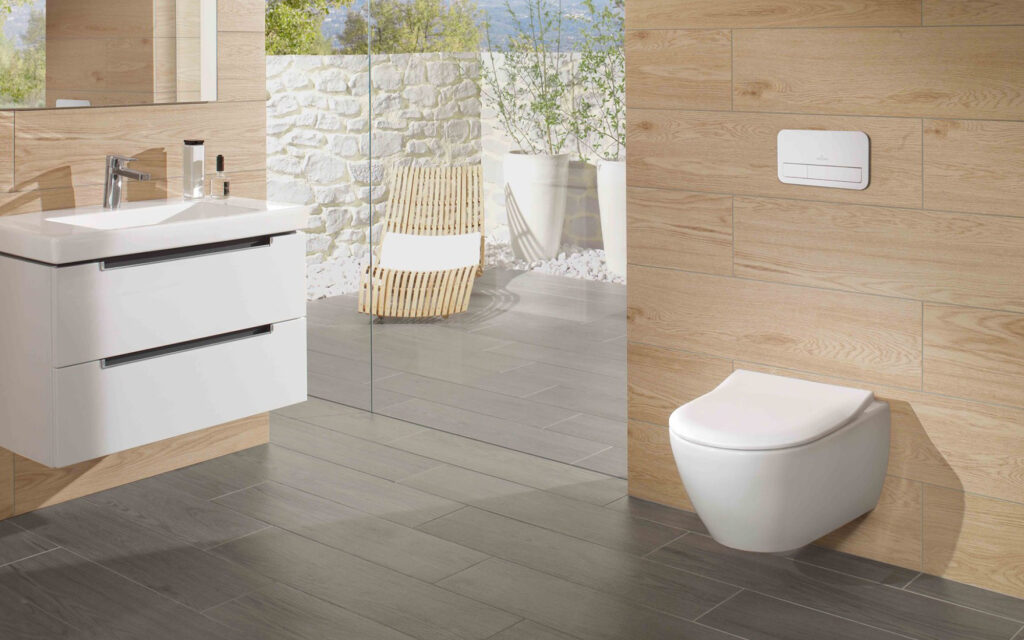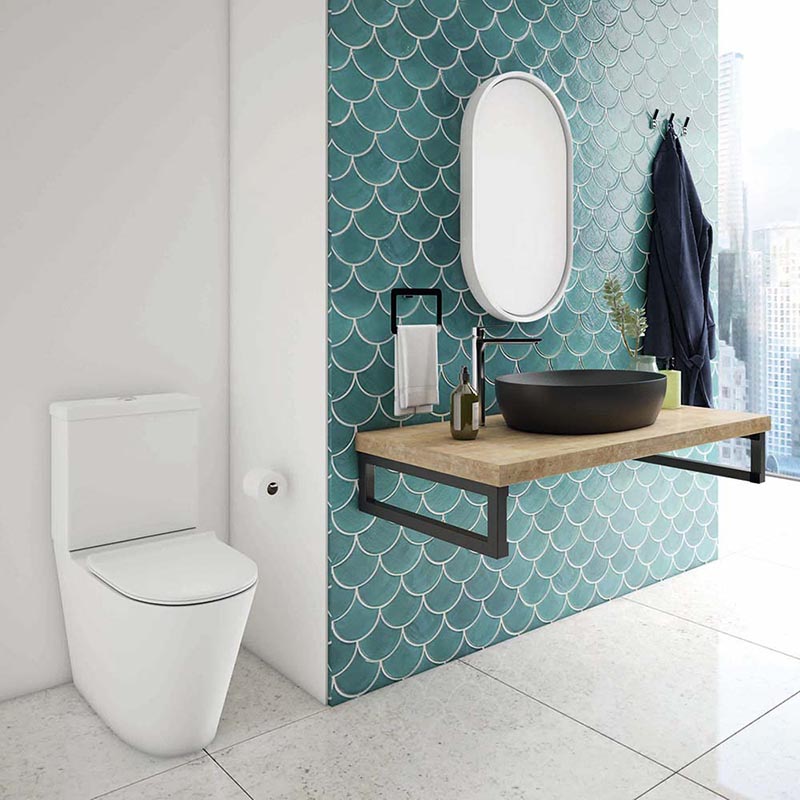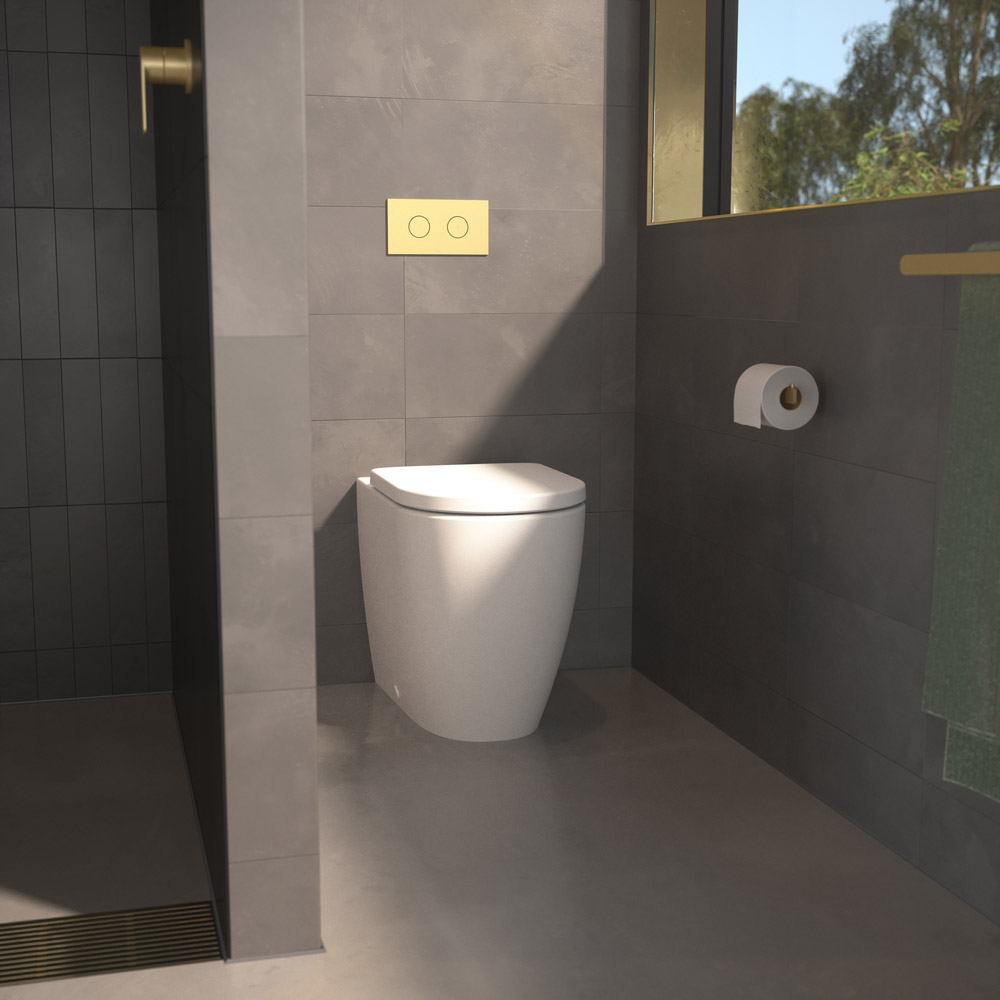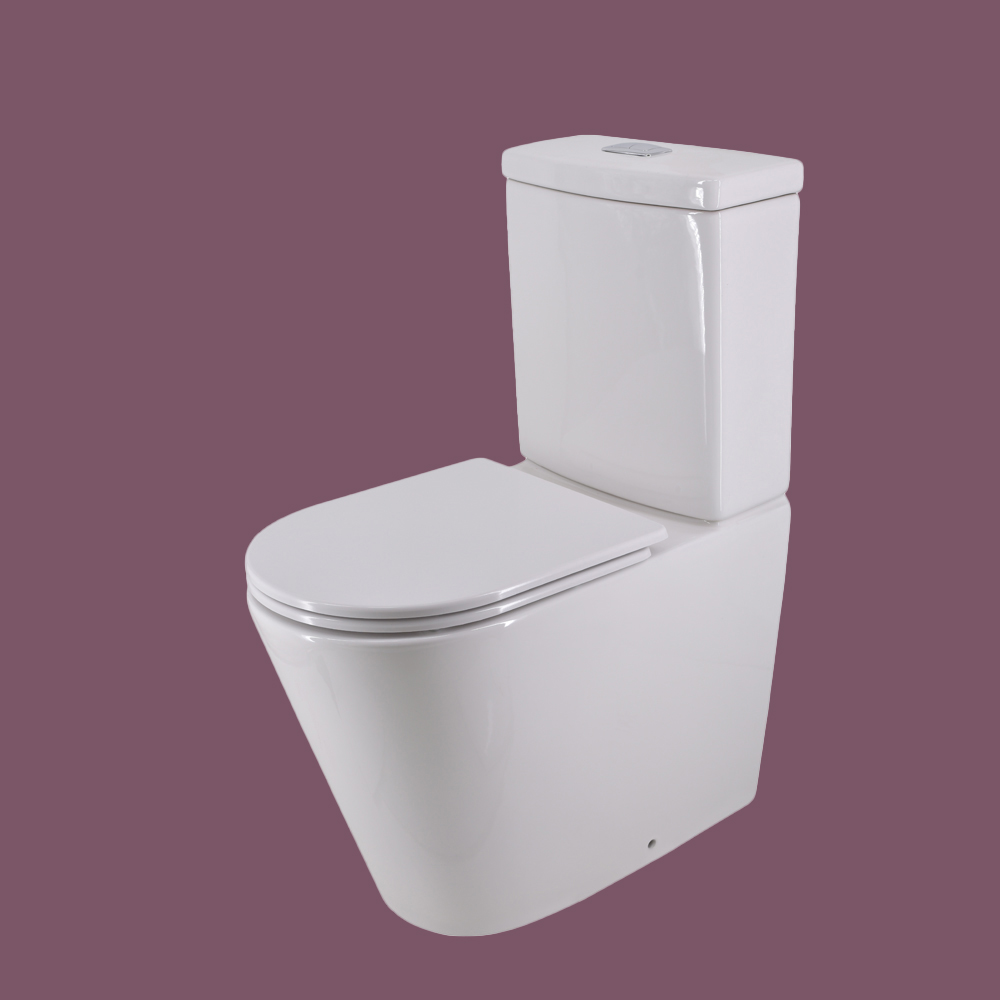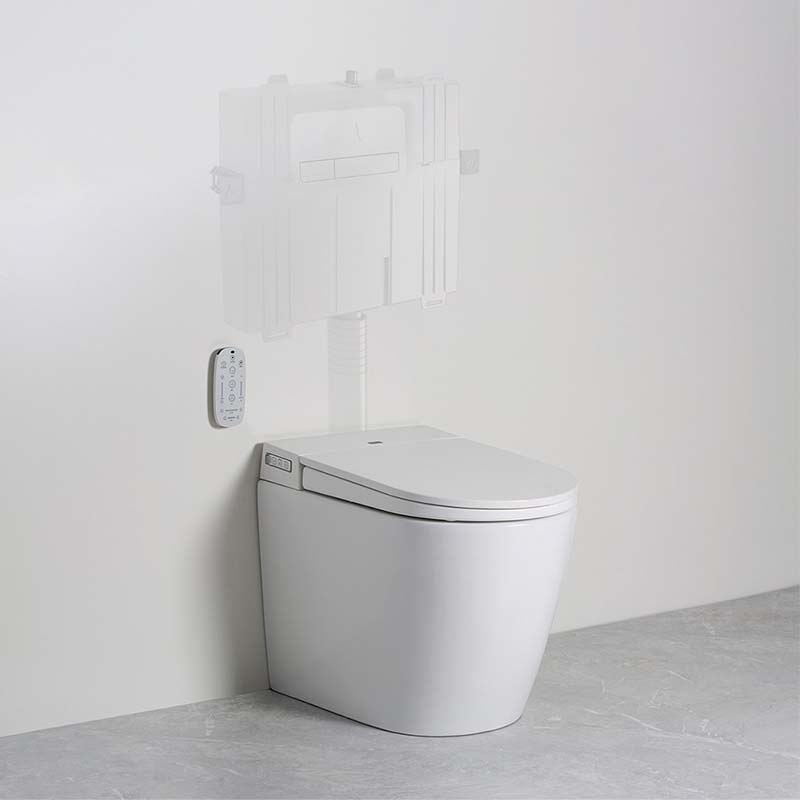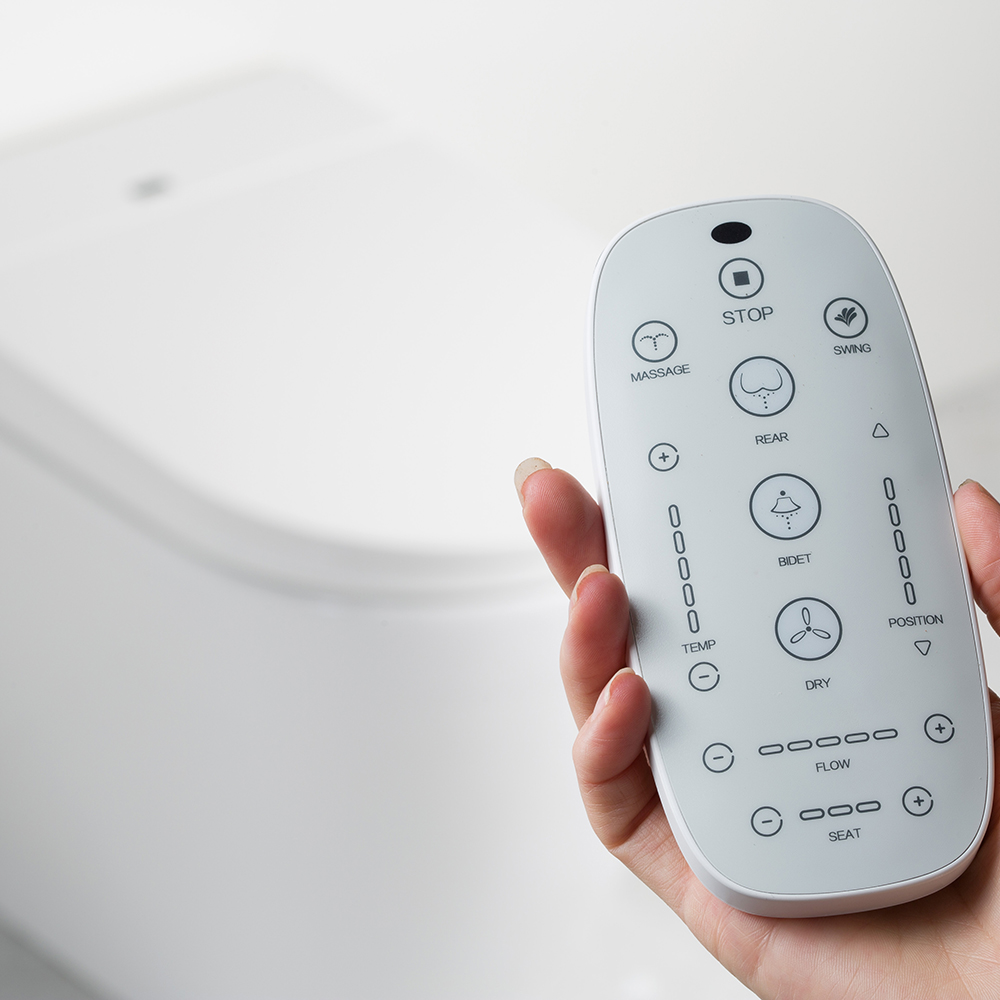
Take photos of your current toilet that show how it sits against the floor and back wall. Photos will help our staff identify what type and style it is so we can recommend the best replacement option.
Which is best for you?
If you’re replacing a toilet and looking to avoid additional renovations such as re-tiling or re-designing the bathroom, we recommend selecting your toilet based on the existing plumbing. If you’re building a new home, your choices are limitless
The plumbing set-out
This is a technical term for the distance between the finished wall and the centre of the waste outlet on the toilet pan. Somewhere around 140-200mm is the standard set-out for most toilet suites. We ask this question to ensure that the plumber can fit the toilet suite to the waste outlet—the hole (usually in the floor) under the toilet pan.
There are two basic toilet pan configurations: S-Trap and P-trap. S-Trap toilets connect directly into the waste or hole under the pan.
P-trap toilets connect to a waste outlet in the wall, or to a specially designed connector which converts the P-Trap into an S-Trap so it can connect into the waste outlet in the floor.
Increasingly, modern toilets come as P-Traps with the connector piece included in the box, which enables easy installation for either S or P-Trap set-outs.
Don’t worry if your set-out is not exactly within the 140-200mm dimensions. There are fittings which the plumber can use to ensure a perfect connection for your toilet.
The golden rule is simply to ask our staff for advice.
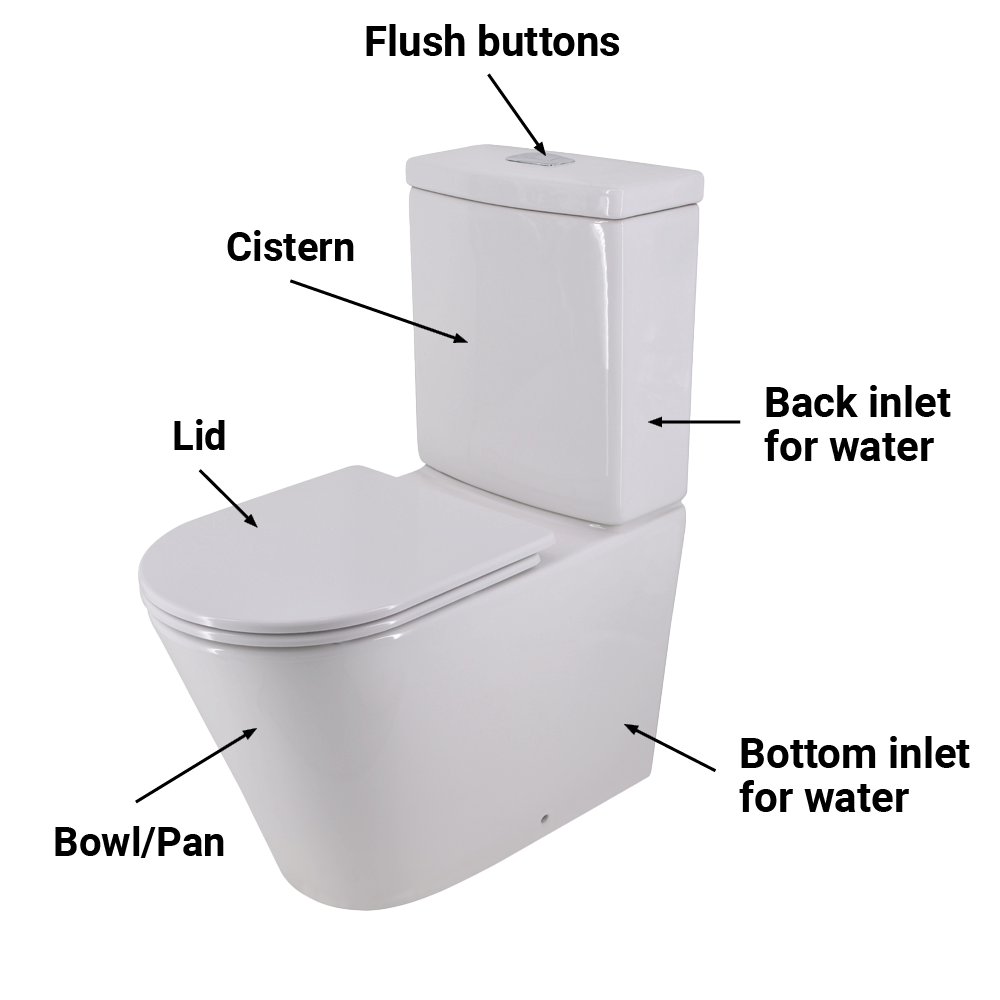
Elements of a toilet
Types of toilet
Every toilet requires a cistern to which hold clean water for flushing and washing away the waste.
Cisterns are commonly connected to the toilet pan (sometimes called the toilet bowl), but increasingly they’re hidden in the wall to present a minimalist look. Buttons on the top of the cistern or on the wall are pressed to make the water flow from the cistern into the pan. Some older installations still have cisterns set high above the toilet pan with a cord to activate the flushing mechanism.
Cisterns sold in Australia these days must be restricted to delivering no more than 6 litres of water for a full flush and 3 litres for a half flush—all in the name of reducing water consumption. They also carry a WELS rating, which is a government star rating system to show their efficiency. Most modern toilets are 3 or 4 star-rated.
Toilet suites come in different designs, heights and depths.
Back to wall toilets
The most popular these days are back-to-wall styles where the toilet pan and cistern sit flush against the wall. These suites normally have smooth, sleek lines with no nooks and crannies to collect dust. They usually come with easily-detached seats which makes cleaning a breeze.
Wall faced toilets
A variant of the back-to-wall suite is the wall-faced suite, which also sits flush to the wall, but has its cistern housed in the wall cavity, and a mounting plate and buttons on the wall to activate the flow of water and provide maintenance access to the cistern.
Wall hung toilets
A wall-hung suite is similar to the wall-faced except the toilet pan is suspended above the floor and held in place by a strong bracket behind the wall. The advantage of the wall-hung suite is that the floor underneath the pan can be easily cleaned. It also accentuates the illusion of space in a small bathroom.
Close coupled toilets
Close-coupled toilet suites have the cistern bolted to the pan.
Link or connector toilets
Link or connector toilet suites were commonplace last century and are still popular because they offer a cheap and flexible option when you’re replacing an existing suite.
Other features to consider
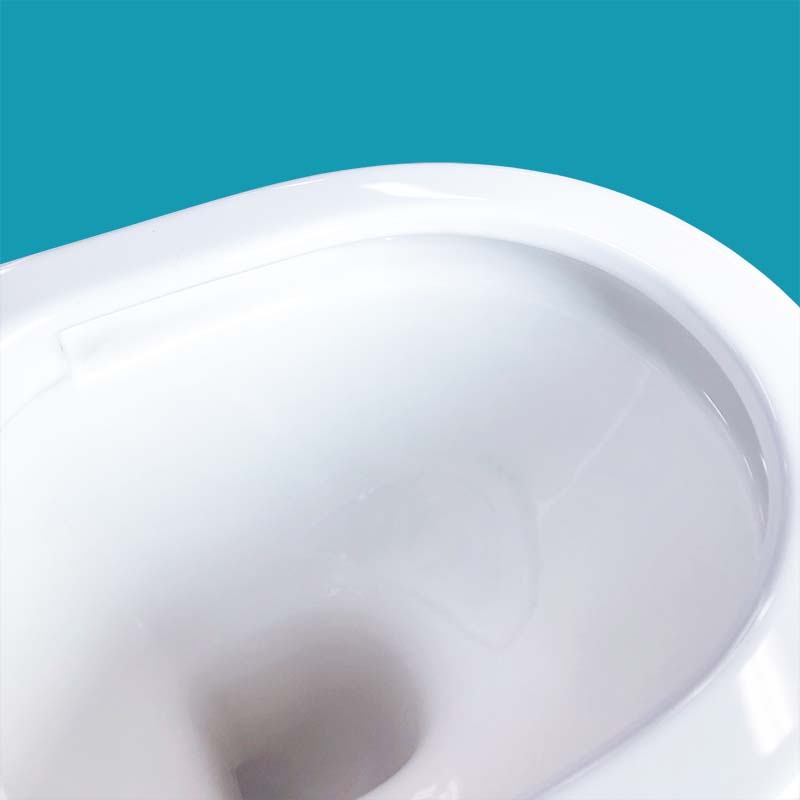
Rimless toilets
In recent years, so-called rimless toilets have come into vogue. The term simply means that the rim at the top of the toilet pan is absent and the water enters from either the side or the back of the pan and swirls around the bowl, creating a more powerful flush. Rimless technology provides big advantages for toilet cleaning and hygiene.
Rimless toilets continue to grow in popularity. They’re affordable and available in a wide range of toilet styles.

Toilet seats
Soft-close toilet seats are fairly standard these days. There are two types: regular thickness and slim.
Slim seats are modern and minimalist, and as well as being visually striking. They can also contribute to making your bathroom look bigger.
Comfort height and accessibility
Extra height toilets are practical and comfortable. Many leading manufacturers add extra height to their more popular standard toilet height models—proving that accessible products can be stylish too.
Extra height toilets add around 50mm to the top of the pan and are particularly useful for people who are either tall or have accessibility requirements.
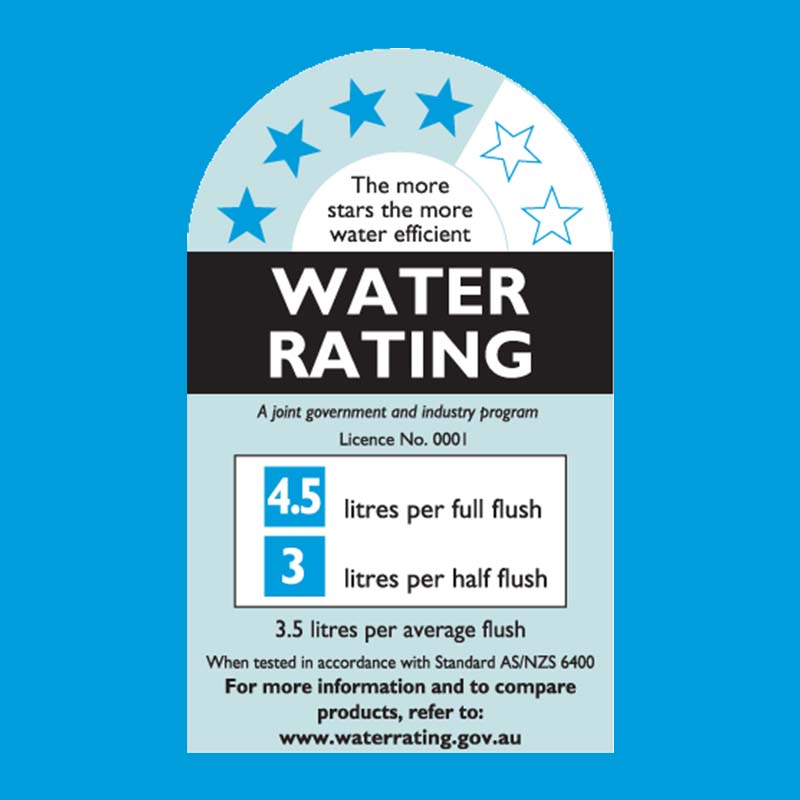
Water efficiency
In Australia, all toilets are required to have a WELS (water efficiency labelling standard) star rating. This is an Australian Government initiative to reduce water consumption by helping you compare water usage between toilets.
Minimum star rating requirements apply to toilets being fit-out in new builds and renovations:
- 4-stars for new homes
- 3-stars for renovations
The more stars, the more efficient the toilet, and the better the outcome for the environment and your pocket.
Smart toilets
Smart toilets
Smart toilets continue to grow in popularity. While in America and Europe bidets are commonly placed as a separate unit next to the toilet, smart toilets combine bidet functions with either an existing or purpose-build toilet.
With luxury features including user detection sensors, heated seats, remote controls, night lights and rimless technology, smart toilets are an impressive addition to the modern household.
